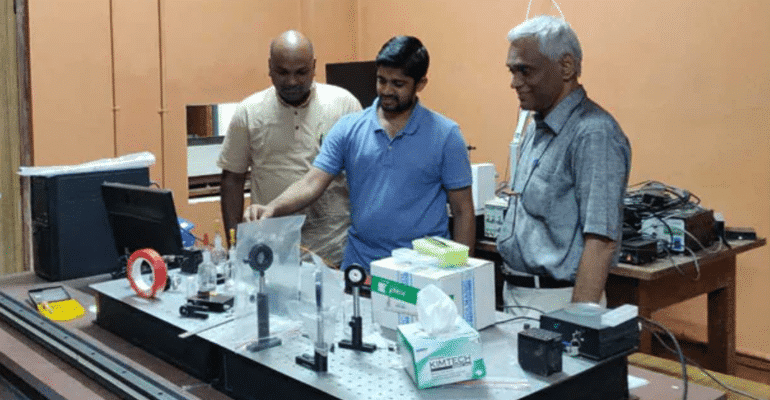A team of researchers at the Indian Institute of Technology (IIT) Madras has created bio-compatible lasers from the carrots by improvising the process first discovered by Sir C V Raman, who received the Nobel Prize for Physics in 1930.
According to the report, Prof. C. Vijayan, Physics Department, IIT Madras, and Dr. Sivarama Krishnan, Assistant Professor, Physics Department, IIT Madras, along with Mr. Venkata Siva Gummaluri, Ph.D. Research Scholar, Physics department, IIT Madras- were part of the research team.

This is a one-of-its-kind development globally and is essential as it is safe for the environment and because of the increasing use of laser applications in our everyday life. The model is likely to help in making important advancements in the scientific and industrial research on optical spectroscopy and sensing.
The results were published in a paper in the Optics Letters journal from the Optical Society of America.
How do Lasers function in a Carrot?
The dictionary meaning of Laser is a device that generates an intense beam of coherent monochromatic light (or other electromagnetic radiation) by stimulated emission of photons from excited atoms or molecules. Lasers are used in drilling and cutting, alignment and guidance, and in surgery; the optical properties are exploited in holography, reading barcodes, and in recording and playing compact discs.
But, the IIT Madras researchers have developed a particular class of lasers called ‘random lasers‘ that have been demonstrated in carrots where a Raman process plays a central role along with the cellulose network, mentioned the statement from the Institute.
Not only they are robust, but this ‘Kitchen laser’ is reliable as well and it also has a very good and linear response to temperature.
The new carrot laser also utilizes CW laser pumping, where energy is provided constantly without breaks to amplify the laser, which then produces a continuous stream of output instead of pulses, mentioned the report.
While talking to NDTV, Prof. C. Vijayan said, “There is now a move towards the development of green, sustainable materials for various applications, including in Photonics. The need for green photonic technologies is obvious in the current times where sustainability, bio-compatibility, and degradability are of paramount importance.”
Not just these lasers are said to be completely natural and fully biocompatible, but they are likely to scale in a more cost-effective way.

